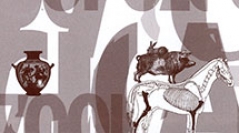

 Anthropozoologica
45 (1) - Pages 77-99
Anthropozoologica
45 (1) - Pages 77-99Tuareg people (condeferation of Tagaraygarayt, Niger) classify their animals by comparing their behaviours with the ones of humans, thereby applying an anthropocentric reading grid to the animal world. They distinguish animals living in the bush from the ones living in the camp, animals devouring their livestock and those who spare it, etc. As Muslim people, they also differentiate licit species (halal) and illicit ones (haram). At last, certain animals are perceived and termed as noble whereas others are despised and associated to human beings of lower social status. These multiple criterions are useful to the classification of animals as well as of meats. They also do influence the mode of consumption. But they also often amalgamate and confuse, in each mode of animal categorization, animals which are consumed and others that are not (or only by certain social categories or age groups). They aren't therefore enough to understand, alone and in an absolute manner, how the consumption of a meat can be considered ordinary or extraordinary. Among the Tuaregs, the notion of restraint or tekarakit organizes relations between human beings, but also their relation to meat . This notion appears central, as it will enable us to distinguish what results from the realm of the ordinary, or what results from the realm of the extraordinary in matters of meat consumption.
Tuaregs, animals’ categories, social organization, restraint, meat, dromedary.